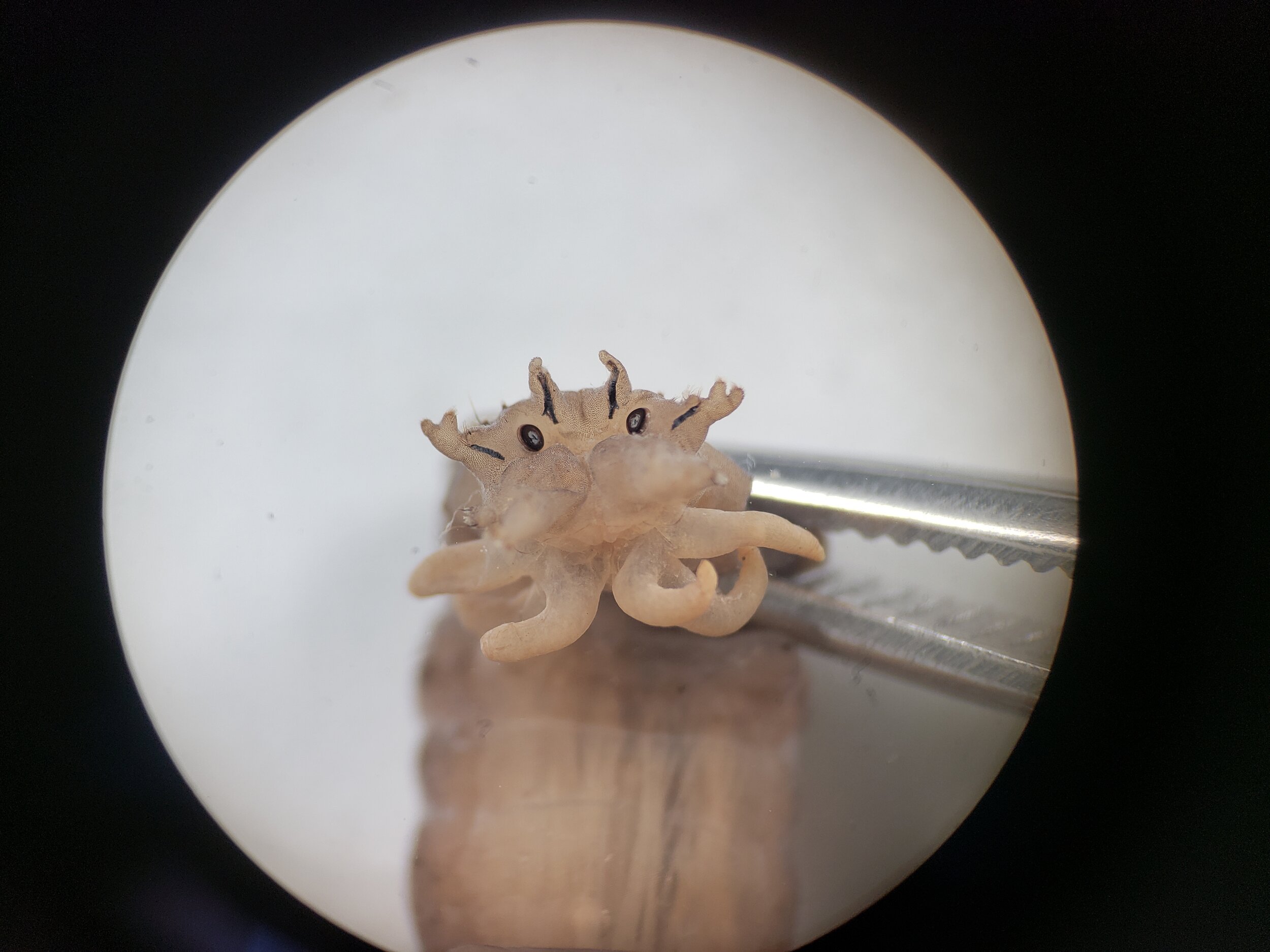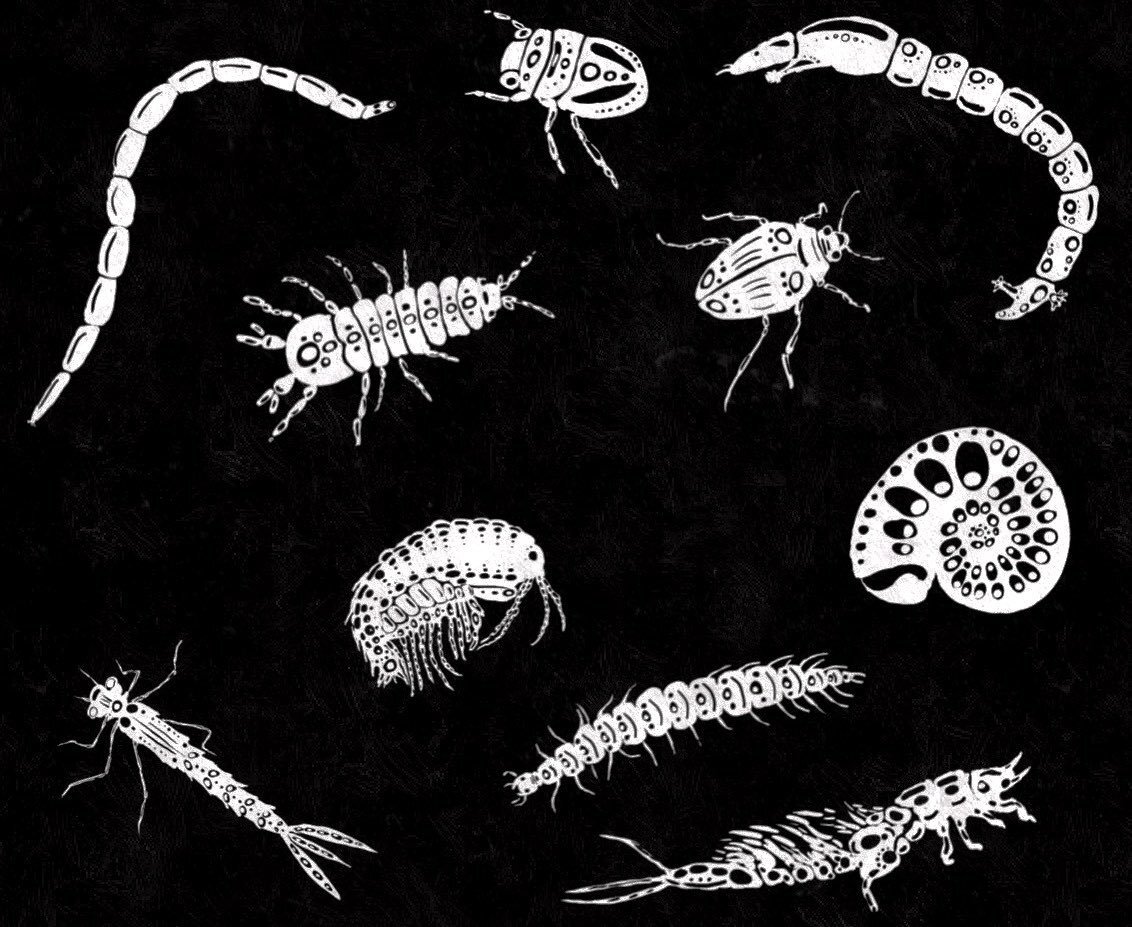
A Leaf Becomes a Bird
How a leaf becomes a bird is an illustrative series by Dante Bresolin that highlights the importance of forested streams for supporting several species at risk in Ontario.

Stream Habitats: Riffles, Pools, and Runs
Let’s break down the sections of a stream. In the Riffle-Pool-Run sequence, each habitat has unique properties that allow for a diversity of organisms to exist and thrive.

Why are EPT taxa so important?
When it comes to biomonitoring, there are three orders of insects that are especially useful – Ephemeroptera, Plecoptera, and Trichoptera, or EPT.

Invert Tuesdays: Bloodworms
These non-biting midges, sometimes called bloodworms, can be an eye-catching red or even pink colour. They have a high hemoglobin-like substance that allows them to survive in low oxygen environments.

Invert Tuesdays: Tipulidae
This leathery skinned animal may look like it’s staring at you, but the head is actually on the other end!

Invert Tuesdays 004: A Simuliidae Moustache you MUST see!
Today we will take a look at a type of Dipteran (the True Flies) that some of us may know quite well. You are probably more familiar with their adult life stage, but in their larvae stage they have a bizarre moustache-like structure!

Invert Tuesdays meets Paris Museum of Modern Art
Members of the order Trichoptera, the caddisflies, recently collaborated with French artist Hubert Duprat and created beautiful cases made from gold and opalescent gems that will be displayed in the Paris Museum of Modern Art in an exhibition this September.

Invert Tuesdays
For today, we look at the Order Odonata, better known as the dragonflies and damselflies.

One of the most useful tools in Stream Ecology
In the Healthy Headwaters Lab, we study freshwater ecosystems with the goals of restoration and rehabilitation in mind. One of the most valuable and widely used methods to study streams is biomonitoring using benthic invertebrates.
